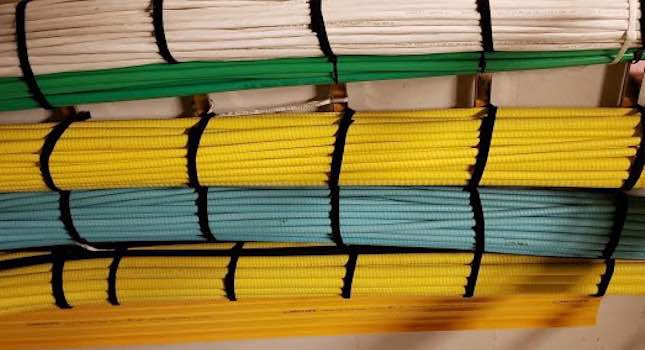The AEC industry has continued to upgrade, automate, and secure their systems and the Internet of Things (IoT) and smart devices are at the forefront.

In recent years, the AEC industry has continued to upgrade, automate, and secure their systems. The use of renewable sources such as wind, solar, and hydroelectric has increased steadily as equipment has become more reliable and prices have declined. With ongoing advanced technologies and the constant strive for “going green,” the power sector plays a large role in solidifying these developments.
The consumer interest in accessibility and clean energy has been constantly increasing, leaving both utilities and designers to start adapting. In 2020, being at the forefront of a new decade comes the start of a variety of ways to both challenge, and improve customer and designer satisfaction using electrical systems. Most of these upcoming trends are common topics discussed throughout the industry, but have continued to evolve tremendously over the years.
Making sense of smart devices and the Internet of Things (IoT)
Most people know the term Internet of Things (IoT) which allows for interrelated computing devices to transfer data without human interaction. For the power sector specifically, this digital integration could contribute to advances in areas such as power generation, lighting controls, monitoring and more. The most common use of IoT in electrical engineering is the advancement of applications on smart devices. In our residential lives, many of us may already have app-driven thermostats or voice-activated lighting controls. However, when it comes to our professional lives, the leap to fully-integrated technological control is rapidly growing.
In multi-story office buildings, data centers, or even hospitals, the use for IoT devices can offer higher energy efficiency, cost savings, and increased reliability. Separate areas of a building can be programmed through individual devices, based on the habits and preferences of the people who occupy it. These connected systems can allow buildings to be better maintained, as equipment and devices will readily alert facility engineers when they are in need of servicing, providing a detailed diagnosis that is readily accessible from most smart devices. With a fully-integrated smart building – connected lighting, heating, ventilation, air conditioning, and other systems – the “Net Zero” solution can become more achievable.
By monitoring entire chain networks of buildings, data can be processed in a way that describes how much energy is being used. Gradually, scaling back in energy and using real-time analysis can effectively reduce carbon footprints, consequently leading to Net Zero living.
Utilizing utilities to their fullest
The utility sector is continuing to see stricter emission regulations, a higher need for reliability, and more maintenance requirements. With these drivers, the utility rates may no longer be affordable or accurate using technologies that might be antiquated or outdated. By implementing the IoT into utilities, both the efficiency and performance of the power grid can be improved upon without a need for increased rates. Data can be gathered from individual smart meters and can then be used to manage resources for utilities, and allow stakeholders to intelligently make informed decisions based on power usage and generation in real-time. With the use of equipment performance monitoring and the ability to model generation output at granular levels, businesses can affectively forecast their maintenance needs, achieve better operating efficiency, and minimize system downtime.
The best offense is a good defense
The increased advancement in bandwidth and distributed wireless sensor networks has made cloud infrastructures and IoT devices a major cybercrime target. New standards of security will continue to emerge in 2020 to fight cyberattacks and protect sensitive information from hackers and other nefarious parties. Starting in California, a new law took effect on January 1, 2020 to protect the security of IoT devices, and any information that comes from them. This comes with the hope that more states will follow in the future.
In Title 1.81.26 in Senate Bill No. 327, there is a list of appropriate security standards for connected devices that manufacturers must follow. With the era of emerging 5G networks, the use of IoT will continue to accelerate, presenting new challenges with misuse, theft, data breaches, and recovering data losses. By starting from the top (i.e. manufacturers) and working downward (i.e. users), security will be a priority for all parts of IoT, ensuring that the system is secure from the start. The communication coming to and from these devices needs to be password-protected and encrypted, as well as accessible by only context- or role-based circumstances.
More members of the electrical industry are recognizing how strong of an impact the IoT can have on making buildings smarter and more efficient. By rolling out strategies that can get manufacturers innovating, designers educated, and contractors prepared – the electrical industry will be stronger than ever in the years to come.
This article originally appeared on Southland’s blog, In the Big Room. Southland is a CFE Media content partner.




